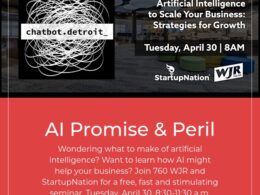Recruitment bias can taint your judgment – and that of those around you – when it comes to hiring.
As humans, we tend to make fast and spontaneous decisions every day without even paying attention to the process. Early childhood memories, community, education, socialization, and media are just a few aspects that influence our decision-making. Ideally, an important decision such as to whether to hire a candidate should be objective and impartial. However, recruitment bias can happen subconsciously whether we want it to or not.
Let`s dive deeper into the basics and learn what can be done to at least minimize the recruitment bias in your business.
What is recruitment bias?
Naturally, candidates come from various backgrounds. While their diversity is welcomed, some recruiters and hiring managers might be unintentionally susceptible to recruitment bias when making critical hiring decisions.
Hiring teams constantly strive to hire the best possible candidates. However, bias can lead to discriminatory hiring decisions against some candidates. Thus, these candidates miss out on some future job opportunities without apparent reason and you miss out on their talent.
Unconscious bias happens outside of conscious awareness. Therefore, recruiters and young inexperienced leaders may make hiring decisions that stem from subconscious emotions and stereotypes.
Common types of recruitment bias
Unconscious bias is the most apparent bias when it comes to hiring. Companies often pride themselves on their diversity in the workforce, but the hidden danger of recruitment bias is still relevant.
Knowing about your own hidden biases can help to minimize the impact on your business.
The most prevalent forms of recruitment bias:
1. Confirmation bias
Recruitment teams and hiring managers often make quick decisions. When hiring your startup team, you will make snap decisions based on fast assumptions perceived as truth and spend the rest of your time justifying your bias.
In fact, 60% of interviewers will decide a candidate’s suitability within 15 minutes of meeting them.
2. Affinity bias
Acting warmer toward a person who shares some common or likable traits and getting a better impression of such candidates is a widespread type of unconscious recruitment bias. Undoubtedly, feeling a natural affinity toward a person is not bad. However, when hiring a team member, you cannot allow this feeling to influence your behavior or decision-making process. Thus, according Women in the Workplace study, for every 100 men promoted to a managerial position, only 72 women were given the same opportunity to advance.
3. Similarity bias (in-group bias)
It is human nature to choose people around us based on similarities in tastes, attitudes and views. The work environment is no different. Thus, taking this too far results in the similarity attraction bias. A diversified team that includes employees of different genders, ethnicities and racial backgrounds is much better at understanding your customers` needs. Plus a McKinsey report found diversifying your team can boost productivity by 35%.
4. Projection bias
You might think that people sharing common values, objectives and beliefs would be a good fit for your company. However, people have their own goals and objectives that they prioritize, thus making a hiring decision under the influence of reflection bias is not a good choice.
5. Halo effect
The halo effect is usually explained as the recruiter’s failure or a subconscious willingness to properly investigate a candidate’s background and qualifications because of heavy concentration on one positive aspect about a candidate.
6. Pitchfork effect
This is the direct opposite of the halo effect. Thus, you tend to concentrate on one negative aspect about a candidate, which you assume to be decisive. For instance, a candidate fails to answer one of some interview questions during the interview, and you automatically consider this candidate to be unqualified for the job.
7. Status quo bias
This type of bias reflects your strong inner willingness to leave everything as it is. Therefore, you either concentrate on experience as a powerful feature and neglect fresh talent or you focus on the qualities and skills of the employee who previously held this position and look for a carbon copy. In both cases, you add internal blinders and risk missing your perfect candidate.
8. Nonverbal bias/effective heuristic bias
Nonverbal bias usually relates to your assumption that a candidate can or cannot cope with the job based on some external features like tattoos, height or body weight. A one-dimensional look at the situation cannot result in an objective and fair decision.
9. Expectation anchor
Sometimes a candidate makes an excellent impression right from the start. Most often, there is no apparent reason except irresistible charm that makes the candidate’s competition seem inferior. This phenomenon is called an expectation anchor bias, as you are not considering other possible options while still interviewing.
10. Contrast effect
As a recruiter, you might spend too much time comparing candidates’ interview answers and resumes, leaving just a slight chance that a candidate will stand out.
There are two possible scenarios:
- Positive contrast effect
A feature seems better than it would usually be if not compared.
- Negative contrast effect
A feature seems worse than it would usually be if not compared.
Instead of estimating candidates` skills and competencies according to the position requirements, you keep assessing candidates based on the perceived quality of the other candidates in the pool.
11. Intuition
According to a report by Signium, 96% of respondents viewed intuition as important when you are looking to hire or promote someone, with 61% of these saying it was very important. Being recruiters for our own businesses, we often tend to trust our gut feelings, which may be biased. Making decisions and selecting a better candidate intuitively may easily turn out to be a big hiring mistake.
What can you do about hiring bias?
Suppose you have spotted several types of recruitment bias that seem pretty familiar to you. No worries. It is only natural to follow your subconscious cues and emotions when making decisions.
However, it doesn`t mean you should rely on them. There are standard practices to eliminate or at least minimize bias while hiring:
- Be aware of the recruitment bias types and their specific features.
- Ensure the hiring team has received suitable interview training covering recruitment bias.
- Make a final hiring decision based on evidence.
- Be consistent and transparent about your hiring process.
- Create and follow a standardized interview procedure.
- Take advantage of innovations developed to tackle recruitment bias.
Trusting your gut and following your emotions during the hiring process make it even more difficult and time-consuming than considering apparent facts.
Top startups tacking recruitment bias
Various up-and-coming startups are working hard on innovative solutions to tackle recruitment bias globally. Here are some of the most promising.
ASPIRE
This British startup develops a cloud-based recruitment platform using machine learning algorithms and blockchain technology to enable customers to accurately identify, match and connect to the right candidate in an unbiased manner.
Interviewing.io
This company allows the hiring teams to objectively assess the candidates` coding skills via an anonymous system. Furthermore, the interview may be performed via a voice masking feature to eliminate personal touch.
TwelveJobs
This U.S.-based startup strives to develop an automated job matching platform that leverages anonymity to reduce recruitment bias. The algorithm hides the information that might introduce bias, such as age, gender, race and socioeconomic status, and highlights professional qualities and achievements.
LaPieza
LaPieza is a Mexican-based smart recruitment platform that designs the recruitment process around skills, knowledge and experience levels. The startup’s applicant tracking system also assists with job postings on more than 60 platforms.
Career.Place
This startup uses a candidate evaluation screening process to identify and match candidates with potential employers. All candidates enter an anonymous evaluation funnel while hiring teams get access to them only after the filtering process is fully completed.
Takeaways
Candidates come from various backgrounds, and their skill sets, personal traits and competencies are unique. Diversity in the workplace is a good indicator of a successful business.
However, quite often, people who make hiring decisions are unintentionally susceptible to recruitment bias. The walls of biased thinking and stereotyping can be detrimental to the future of your team. Don’t fail to root out the source of the problem.






